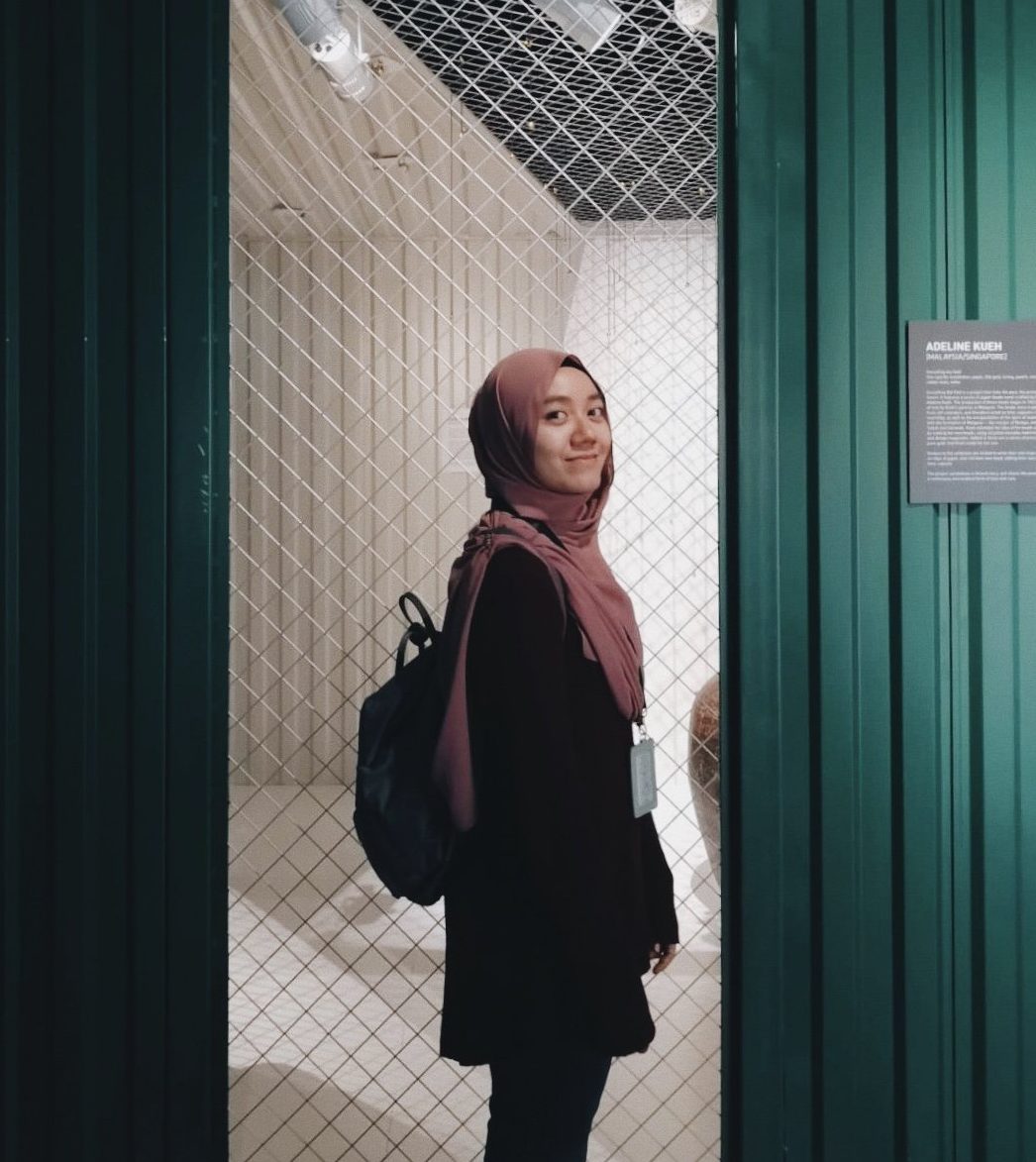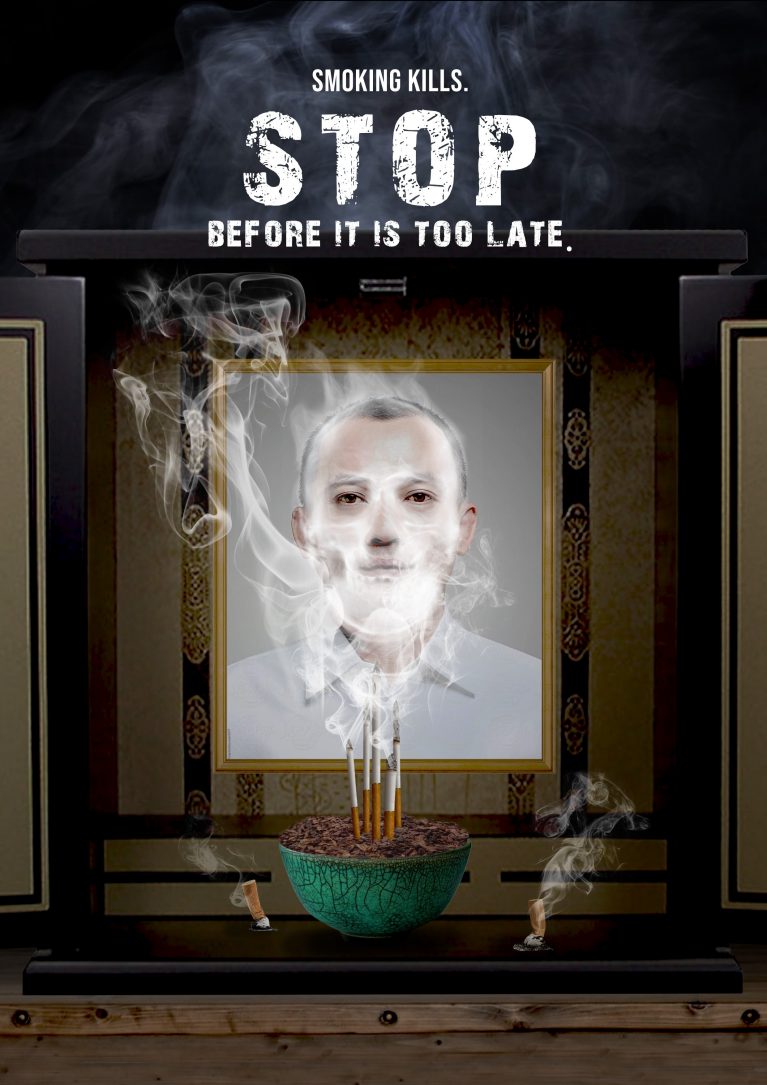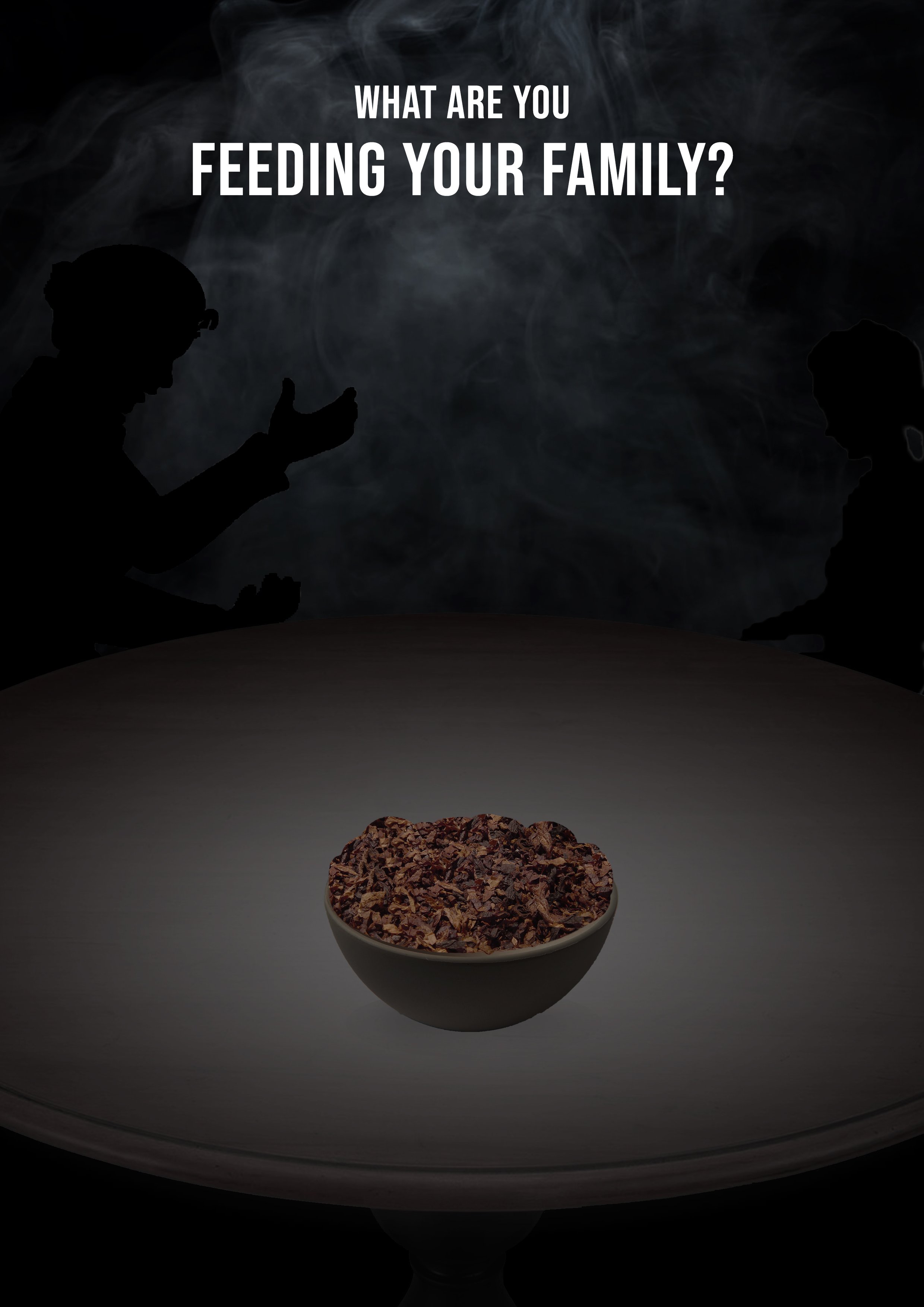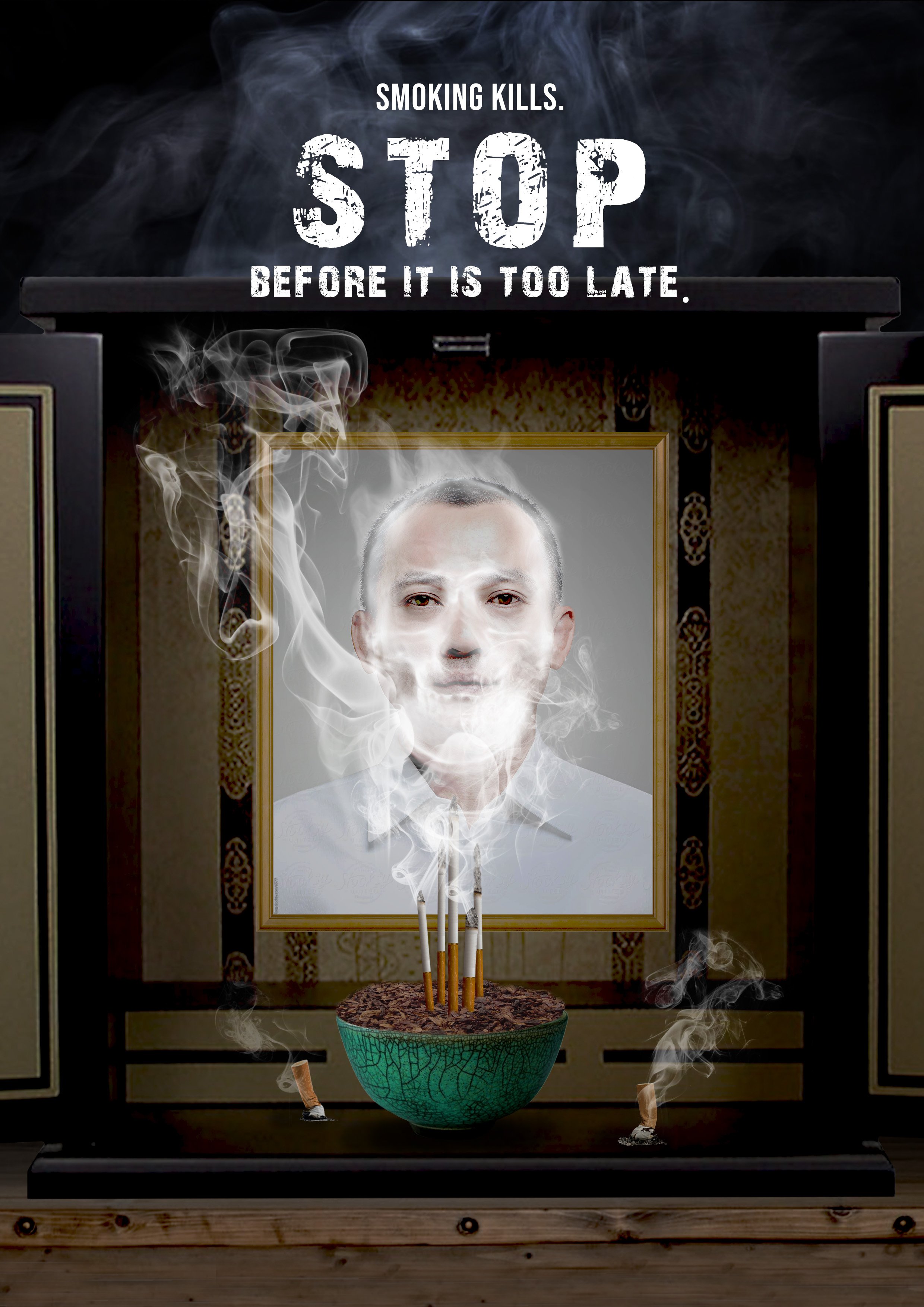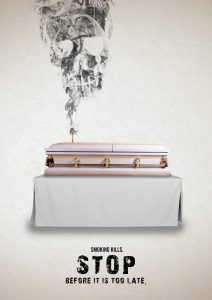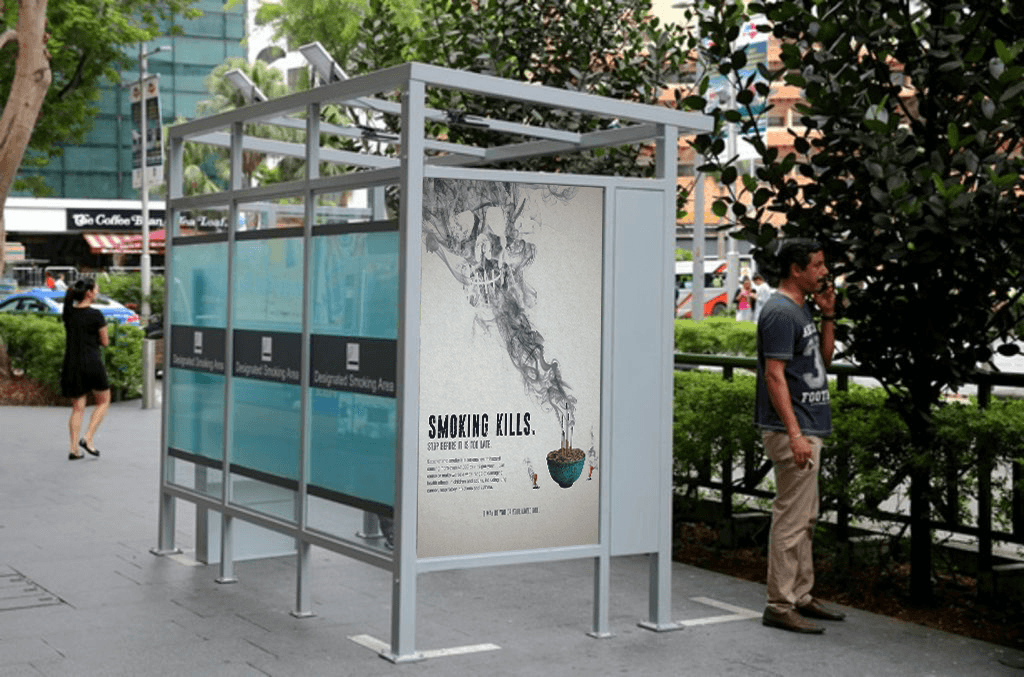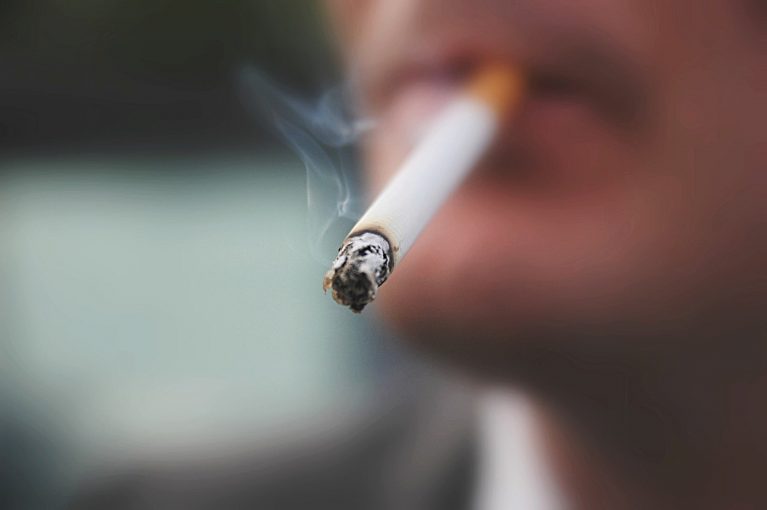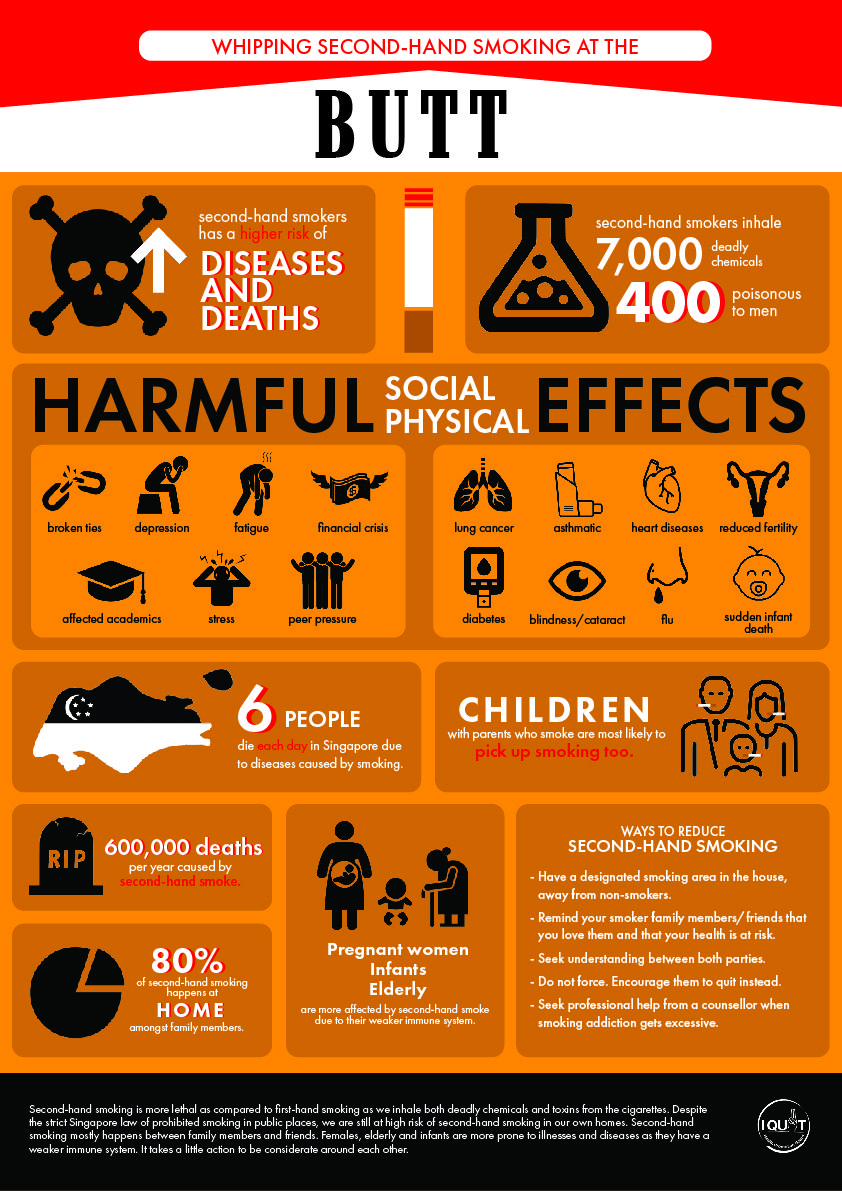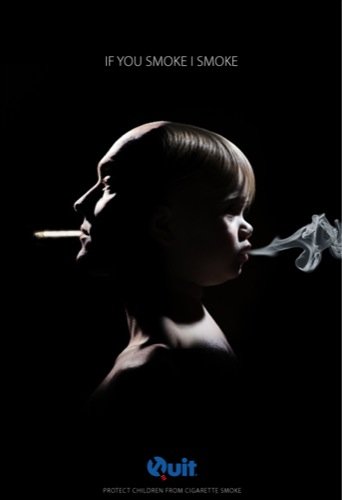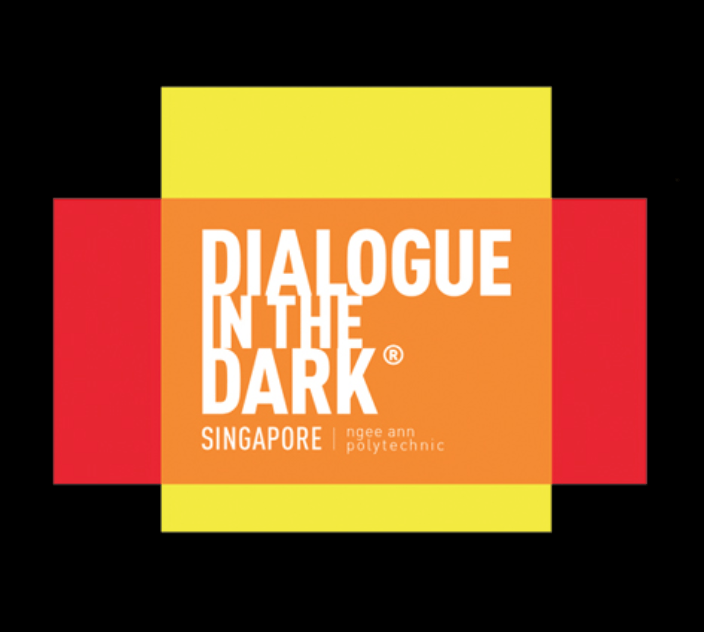I’ve conducted a survey amongst friends and family in regards to smoking on a daily basis in Singapore (and also Malaysia, since some of my relatives stay there).
The survey has been directed to 3 different groups of people:
1) Smokers (first-hand)
2) Non-smokers (second-hand)
3) Non-smokers (no contact with direct cigarettes smoke)
Out of the whole survey, I’ve received a response from 49 people. 67.3% of them females, while the remaining 32.7% were males. And out of the 49 people surveyed, 77.6% (38) of them were non-smokers where as 22.4% (11) of them were. In regards to the answers received, I can infer that majority of the smokers were male.
From the remaining 38 people, 57.9% (22) were second-hand smokers whereas the remaining 42.1% (16) do not have any contact with smoke.
—
For first-hand smokers, I have asked the following questions.
1) Have you experienced any chest/heart pain due to smoking? (Yes/No)
2) How many packs/sticks do you smoke on a daily basis? (eg. 3 sticks, 2 packs)
3) When did you start smoking? (Age)
4) Why did you start smoking?
5) Do you move away from non-smokers when you are lighting a stick? Why or why not?
6) What would you like to say to non-smokers?





Answers:
From the answers given, I can see that being a first-hand smoker doesn’t affect any of their health as only 2 people indicated that smoking has caused them pain in the chest. The amount of sticks smoked starts from as little as 1-2 sticks per day, to as much as 20 sticks per day, with an average of 10 sticks per day. The age range for when they started smoking starts from as young as 12 years old, to as old as 21 years old. With 12 years old having the highest number, followed by 18/19 years old. Majority of the response indicated that the reason they started smoking was due to peer pressure/being cool/curiosity. All of the responses also mentioned that they do not smoke in front of others and move away when non-smokers are nearby. Lastly, the message given to non-smokers were mostly to “stay away from cigarettes/smokers” and some with the “that’s your problem” mindset.
—
For second-hand smokers:
1) Do you move away when someone lights a stick near you? (If no, why?)
2) How often do you inhale second-hand smoke? (eg. Hourly, Daily, Weekly)
3) Who are the ones who smoke around you? (eg. partner, family members, friends, public)
4) Has the second-hand smoke caused you any sickness or illness? (If yes, please state.)
5) What would you like to say to smokers?
Answers:
Majority indicated that they would move away when someone lights a stick near them as they hate the smell of it while some indicated that they stay as to not come across as rude or to not want to be left out amongst friends. Some has even grown immune to the smell. More than 50% of the responses indicated that they are victims to second-hand smoking on a daily basis. About 40% of the answers, weekly. While the remaining 10% were monthly or “depends on situation”. The most shocking answer I received was how 100% of the reason for second-hand smoking was because of their family members. Some indicated partners, some relatives. A few mentioned “public” as they can move away once they smell smoke. Out of 22 responses, 8 people mentioned how smoke has caused them various diseases/illnesses such as asthma, sinus attacks, cough, dizziness, chest pain and nauseousness.
Messages from second-hand smoke victims to smokers:


—
For those with no contact with cigarette smoke:
1) What are your opinions on smoking and second-hand smoking?
2) What would suggest to reduce/stop excessive smoking?
Answers:
For these group, I’ve decided to ask them for their opinions on smoking as a third-person POV.




Lastly, I ended the survey by asking the respondents whether they are aware that second-hand smoking is more lethal than first-hand smoking.

42 people mentioned that they knew it was more lethal, whereas the remaining 7 didn’t.
Conclusion:
Second-hand smokes happens more around us than we can ever imagine. Most of the smokers are aware of what they are doing to the people around them. Children whose parents smoke are also likely to pick up smoking, as seen in the Student Health Survey where 6 in 10 youth smokers have at least one parent who is also a smoker.
Target Audience:
Youth/Teenagers.
As seen from the statistics received, majority started from as young as a minor, even before they were of a legal age to purchase cigarettes. Most of them started due to peer-pressure and curiosity. Smoking happens mostly when people are influenced by someone else. The main objective is to stop/reduce the act of smoking from the root itself, instead of focusing more on the current smokers who has been smoking for years – as it is majorly hard for them to stop.
Statistics source:
https://www.healthhub.sg/live-healthy/450/environmentaltobaccosmoke

















